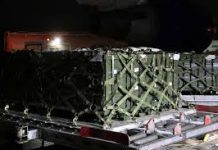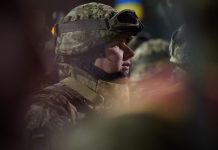
Italy will cease providing military aid to Ukraine once a formal ceasefire in the conflict with Russia is in place, according to Defense Minister Guido Crosetto, who spoke with Corriere della Sera on June 15, 2025. This move highlights Italy’s intention to protect its national security interests while continuing non-lethal assistance. The announcement marks a major shift in Rome’s stance on the war that has gripped Eastern Europe since February 2022.
Crosetto clarified that Italy would not exhaust its military reserves to support Ukraine, instead focusing on aid that directly benefits civilians. The decision arrives at a time when European governments are dealing with the economic and political strains brought on by the prolonged war, prompting debate over the long-term viability of Western backing for Kyiv.
“When a genuine ceasefire is established and real negotiations begin, our military support will stop. Until then, we’ll continue aiding Ukraine within our limits,” Crosetto stated in the interview. His remarks signal Italy’s readiness to move toward diplomacy as soon as active hostilities subside, aligning with broader European diplomatic efforts.
Italy has been a reliable contributor to Ukraine’s defense efforts since the onset of the conflict, supplying both military and humanitarian aid. Among its most significant military contributions is the SAMP/T air defense system—also known as MAMBA—a high-tech Franco-Italian platform capable of intercepting aircraft, drones, and ballistic missiles at ranges of up to 75 miles. Two of these systems, valued at around $500 million each, have been delivered to Ukraine, leaving Italy with only three for domestic defense.
SAMP/T, developed by Eurosam (a joint venture of MBDA Italy, MBDA France, and Thales), uses Aster-30 missiles that can reach speeds above Mach 4.5 and strike targets at altitudes up to 20 kilometers. The system’s vertical launch capability enhances mobility and quick response—key features on Ukraine’s fast-changing battlefield.
However, Ukraine’s supply of Aster-30 missiles is reportedly dwindling, prompting a request to Italy and France for at least 50 more. Italy has been reluctant to commit further shipments due to concerns about its own defense readiness, while France, though better stocked, faces similar challenges.
In addition to air defense, Italy has provided Ukraine with a range of weapons including 155mm FH70 howitzers, Stinger missiles, light anti-tank weapons, and millions of rounds of ammunition. Though smaller in scale compared to U.S. support, Italy’s contributions have been targeted and strategically impactful.
Beyond weaponry, Italy has channeled over €800 million in humanitarian aid since 2022. This has included medical supplies, food, shelter, and evacuation efforts organized in collaboration with the United Nations. Crosetto confirmed this support will continue, emphasizing Italy’s focus on easing the humanitarian burden rather than prolonging armed conflict.
The timing of Italy’s policy change coincides with increased international diplomacy, including recent but inconclusive meetings between Russian and Ukrainian officials in Istanbul. Prime Minister Giorgia Meloni has supported efforts by the U.S. and the Vatican to mediate peace, even confirming in May 2025 that Pope Leo is open to hosting negotiations.
Domestically, the Italian government’s position on Ukraine is shaped by internal coalition dynamics. Meloni’s administration, consisting of the Brothers of Italy, the League, and Forza Italia, faces differing views. The League has pushed for friendlier ties with Moscow and opposed a €40 billion EU aid package for Ukraine, while Forza Italia supports engagement with Ukraine but favors fiscal caution. Meloni has sought to balance pro-NATO commitments with rising public concerns over Italy’s economic outlook.
The cost of EU sanctions against Russia has amounted to roughly €171.4 billion for Italy—about 2.9% of its GDP—fueling calls to reevaluate foreign policy priorities. Public opinion has become more skeptical about long-term military involvement, especially amid rising inflation and energy prices.
Still, Italy’s defense sector, led by major firms like Leonardo, stands to benefit from increased European defense budgets. The EU’s push to ramp up military readiness, highlighted by European Commission President Ursula von der Leyen, could offer growth opportunities despite broader public hesitancy.
It remains unclear how Italy’s decision will influence other NATO allies. While countries like France and Germany remain committed to Ukraine, internal political pressures may eventually push them toward recalibration. Eastern European nations such as Poland and the Baltic states may see Italy’s move as a worrying sign of weakening Western resolve.
The UK and France have floated the idea of a European peacekeeping mission in Ukraine—a concept Italy has dismissed as impractical and risky. Meanwhile, under President Donald Trump, the U.S. has scaled back its own military support, urging Europe to take on more responsibility, further complicating Italy’s strategic decisions.
Ukraine has responded with caution. Defense Minister Rustem Umierov, during a visit to Rome in March, pushed for more missile deliveries and deeper industrial collaboration. Kyiv remains heavily dependent on external funding, with over 90% of its defense budget supported by foreign aid.
Losing Italian support, even partially, could weaken Ukraine’s air defenses, particularly given Russia’s continued missile attacks. Though Ukraine has publicly refrained from criticizing Rome, frustrations have reportedly grown behind the scenes over Italy’s refusal to send more missiles.
Russian media has portrayed Italy’s shift as a symbolic win, suggesting cracks are forming in NATO’s unified stance. The Kremlin continues to demand security assurances and rejects any Western troop presence in Ukraine, creating further obstacles to peace talks. Italy’s recalibration may be seen in Moscow as evidence of declining Western commitment.
Italy’s approach reflects its long-standing preference for diplomacy over military engagement. Throughout the Cold War, Rome balanced NATO membership with pragmatic relations with the Soviet Union. Its peacekeeping legacy—from Bosnia to Afghanistan—continues to shape its foreign policy outlook today.
The SAMP/T’s deployment underscores Ukraine’s growing reliance on advanced air defenses in modern warfare. While the system is agile and highly effective, its high cost and limited availability present scalability challenges. MBDA is set to double production by 2026, but this may not meet Ukraine’s immediate demands.
Italy’s broader defense strategy is also evolving. Crosetto has advocated for higher military spending to meet NATO’s 2% GDP target, a position echoed by Trump. He also criticized the UK for withholding key technology in a joint fighter jet project, reflecting Rome’s desire for more autonomy in global defense matters. Italy’s decision in March 2025 to pause talks with SpaceX over Elon Musk’s controversial Ukraine comments further illustrates its sensitivity to geopolitical dynamics.
The economic fallout from the war has hit Italy’s manufacturing and energy sectors hard. While new energy deals with Algeria and Azerbaijan have helped reduce dependence on Russian gas, prices remain elevated. In this context, prioritizing humanitarian support is seen as a way to maintain international credibility while easing domestic strain.
As the war moves into its fourth year, Italy’s shift reflects the broader challenges facing Western unity. Diverging national interests, rising costs, and shifting public opinion are forcing governments to rethink their strategies. Meloni’s support for potential U.S.-brokered peace talks adds to the growing momentum for diplomacy.
Crosetto’s announcement represents a carefully measured adjustment: maintaining humanitarian leadership while preparing for a post-war landscape. The effectiveness of this approach will depend on how the conflict evolves—and whether Europe can present a united front in both war and peace.




